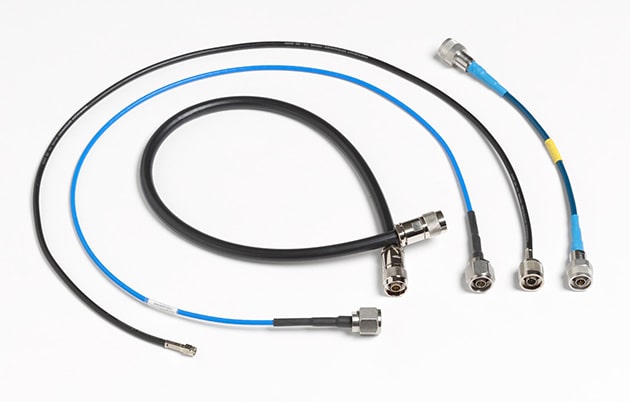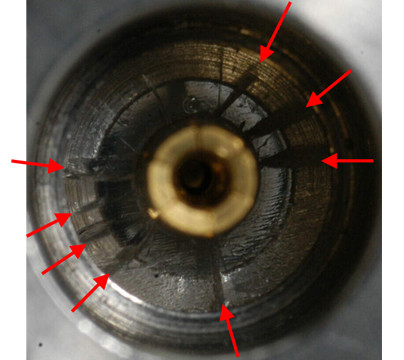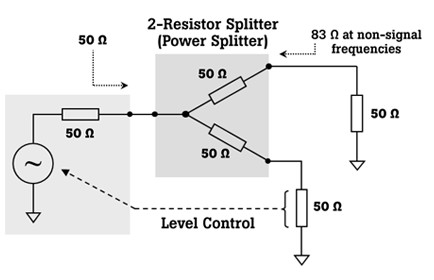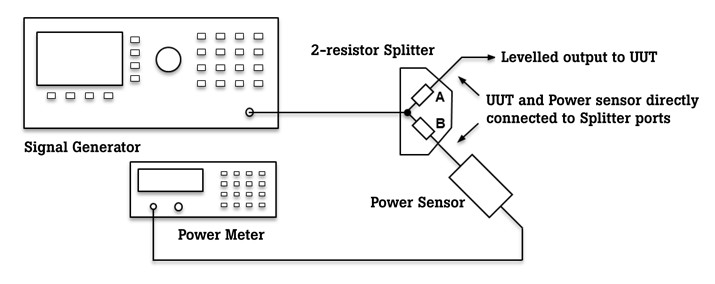- Otras empresas de Fluke:
- Fluke
- Fluke Biomedical
- Fluke Networks
- Fluke Process Instruments
Top 5 sources of RF calibration error

RF and microwave calibration is one of the most complex areas of metrology, with many opportunities for human and measurement errors. Here are the top 5 sources of error:
- Mismatch errors. Mismatch errors are one of the most significant contributors to errors and uncertainties in RF and microwave calibration. Mismatch error depends on the source and load match. The quality of the source and load match contributes to the mismatch error. Avoid introducing excessive mismatches by using worn or damaged connectors and inappropriate cables. You can help to reduce mismatch errors by inserting a ‘masking pad’ attenuator with good match characteristics at the point where the match is worst or most variable.
- Choosing the wrong cables and connectors, or not maintaining them regularly. Consider cables and connectors to be like any other calibrated items in the laboratory:
* Include them in routine maintenance and calibration schedules.
* Serialize or tag them as a means of identifying individual items.
* Inspect them regularly for damage and other degradation that might affect performance.

- Poorly performing coaxial devices and interconnections. Poor performance can often be traced to problems with out-of-tolerance dimensions, cleanliness, damage or incorrect tightening of connectors. Inspect connectors for damage and dirt before connecting them. Gauge all coaxial connectors on a routine basis to detect any out-of-tolerance mechanical conditions. When connecting or disconnecting, avoid over-tightening and be sure to use a torque wrench to ensure correct tightening torque.

- Applying correction factors incorrectly. Incorrect arithmetic and algorithms can easily end up in automated calculations within spreadsheets and software. Mistakes can often go undetected when applied corrections are small. It is good practice to test and validate any calculations with deliberately large numbers to make the effect of applying correction factors more easily observed.

Typical power splitter application of precision leveling, where a power sensor is connected to one splitter output port and the leveled signal appears at the other output port connected to the device under test.

The reflection travels twice through the masking pad inserted between source and load, reducing by twice the masking pad attenuation value, thus reducing mismatch error.
- Working with power splitters and dividers. The difference between power splitters and power dividers and their applications is often misunderstood, leading to incorrect choice of device and attendant measurement errors. Both devices may be used to split or combine signals, and sometimes the appropriate choice may be unclear. The power splitter provides two well-matched impedances, close to 50 Ω, between the input and each output port. The power divider is the equivalent of three equal (approximately 16.6 Ω) resistors.
Recommended Products
96270A 27 GHz Low Phase Noise Reference Source
96040A Low Phase Noise Reference Source
Recommended Resources
Minimizing RF Mismatch Errors and Uncertainties - application note
Choosing and using cables for RF calibration - application note
Making Repeatable RF Connections During RF Calibration - application note
Speak with a calibration expert
- Inicio
- Productos
- Novedades de Fluke Calibration
- Calibración eléctrica
- Calibración de radiofrecuencia
- Equipo de adquisición de datos y pruebas
- Calibración de temperatura
- Calibración de humedad
- Calibración de presión
- Manómetros de pistón
- Controladores/Calibradores
- Monitores de presión
- Balanzas de pesos muertos
- Monitores y calibradores manuales
- Handheld Pressure Calibrators
- Calibración de datos de aire
- Monitores ambientales
- Accesorios de calibración de presión
- Sistemas personalizados de calibración de presión
- Software de calibración de presión
- Calibración de flujo
- Calibradores de procesos
- Software de calibración
- Servicio y soporte técnico
- Todos los instrumentos de calibración
- Instrumentos portátiles
- Comprar
- Novedades
- Capacitación y eventos
- Literatura y educación
- Soporte Técnico
- Service Request (RMA)
- Programas de servicio
- Servicio técnico
- Base de Conocimientos
- Acreditaciones
- Centros de servicio autorizados
- Calibration Certificates
- Community Forum
- My MET/SUPPORT
- Manuales de productos (guías de usuario)
- Hojas de datos sobre la seguridad (SDS)
- Programa de reciclado
- Safety, Service, and Product Notices
- Descargas de software
- Garantias
- Sobre Nosotros

